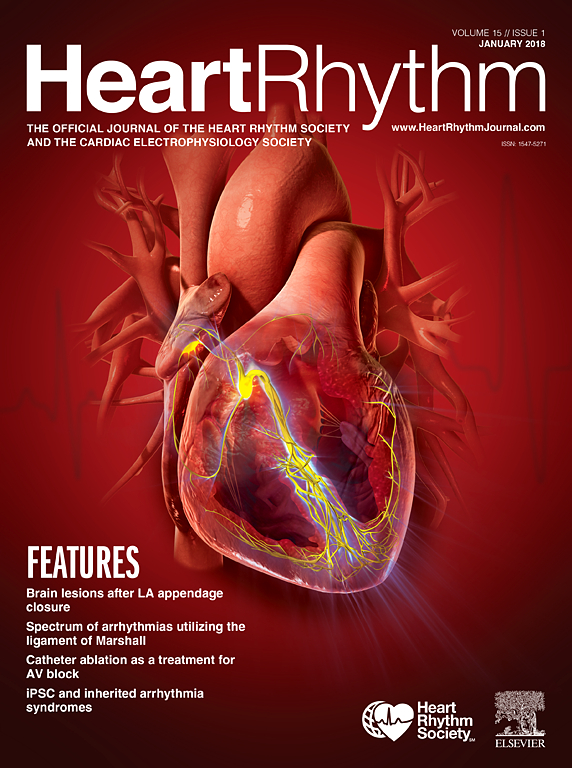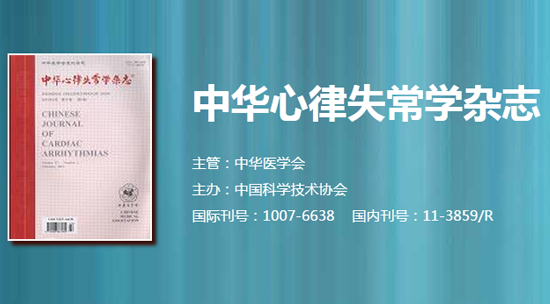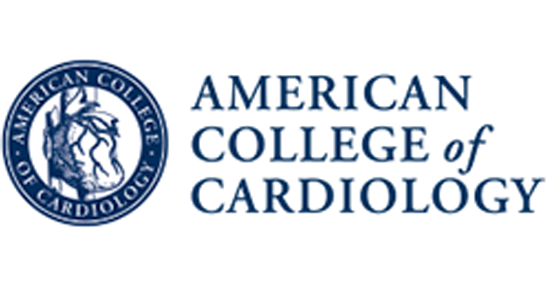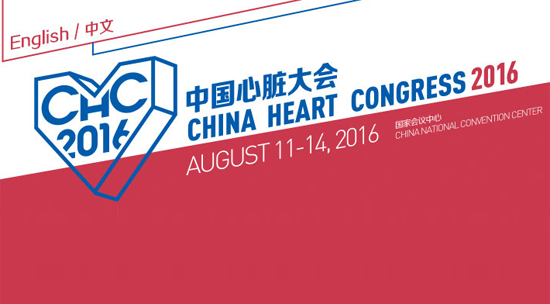Heart Rhythm主编---陈鹏生教授语音速递(英文版)
《Heart Rhythm》(月刊)创刊于2004年,是美国心律协会和心电学会的官方杂志。该杂志发表临床和基础的原创同行评议的文章,专门用于诊断和治疗心律失常,以及心脏和血管的电生理学,包括离子通道和生物物理学、药理学、遗传学、建模、细胞和体内电生理学、结果、卫生系统研究等。创刊以来,杂志在心脏及心血管系统学科的SCI排名不断提升,是国际心律学科最重要的学术期刊之一。陈鹏生教授为美国印第安纳大学医学院Krannert心脏病研究所教授,是国际知名的的心律学专家。相信陈鹏生教授的介绍将让大家及时了解国际心律失常领域最新的权威信息,并增进对《Heart Rhythm》杂志的了解,使得大家都能有所提升,并将学习成果运用到临床实践中,更好地为患者服务。
张澍
2018年2月

Come and listen to the editor in chief to introduce the most authoritative international heart rhythm research results.
I am Peng-Sheng Chen, the editor-in-chief of Heart Rhythm. Thank you for listening to this podcast.
01
The February 2018 issue of Heart Rhythm has a featured article entitled “Class IC antiarrhythmic drugs for suspected premature ventricular contraction–induced cardiomyopathy” written by Hyman et al from University of Pennsylvania. An author interview conducted by Dr Dan Morin can be found on the www.heartrhythmjournal.com website. The authors analyzed 20 patients suspected of having PVC induced-cardiomyopathy and were treated with IC-antiarrhythmic drugs. With treatment, mean PVC burden decreased from 36% to 10% and mean LVEF increased from 37% to 49%. The authors conclude that in patients suspected of having PVC induced cardiomyopathy, 1C antiarrhythmic drugs effectively suppressed PVCs, leading to LVEF recovery in the majority. This study suggested a possible alternative to catheter ablation in the treatment of PVC induced cardiomyopathy. The study is limited by the small size and the retrospective data collection. Larger study is needed to test this exciting hypothesis.
02
The next paper is entitled “Atrial fibrillation and cognitive decline in the Framingham Heart Study” by Nishtala et al from UC San Francisco. The authors studied 2682 participants of the Framingham Heart Study original and offspring cohorts. They found that after adjustment for vascular risk factors and apolipoprotein ε4 status, AF was significantly associated with longitudinal decline in executive function in both cohorts.
03
The next paper is “Urban-rural differences in mortality for atrial fibrillation hospitalizations in the United States” by O’Neal et al from Emory University School of Medicine, Atlanta, Georgia. The authors performed cross-sectional examination of patients who were hospitalized for AF in the National Inpatient Sample between 2012 and 2014 to compare in-hospital mortality in patients admitted to urban vs rural hospitals. They found that patients admitted to rural hospitals had a 17% increased risk of death as compared with those admitted to urban hospitals. The clinical question raised in this study has important public health implications.
04
The next paper is “Absence of rotational activity detected using 2-dimensional phase mapping in the corresponding 3-dimensional phase maps in human persistent atrial fibrillation” by Pathik et al from the Royal Melbourne Hospital, Victoria, Australia. The authors developed a 3D phase mapping technique that uses the 3D locations of basket electrodes to project phase onto patient-specific left atrial 3D surface anatomy. Using the 3D maps as the gold standard, the authors sought to determine whether rotors detected in 2D phase maps were present at the corresponding time segments and anatomical locations in 3D phase maps. They studied AF in 14 patients and found that rotors detected in 2D phase maps were not observed in the corresponding 3D phase maps. These findings may have implications on the accuracies of current 2D phase mapping in detecting rotors. After the publication of this article, two groups of authors submitted letters to editor to challenge the mathematics used in the study. Those letters and the authors’ responses are published online.
05
The next paper is “Spiral activation of the superior vena cava: The utility of ultra-high-resolution mapping for caval isolation” by Yamashita et al from Jikei University School of Medicine, Tokyo, Japan. The authors used an ultra-high-density mapping system to map the SVC in 40 patients with AF. They found that the sinus node location varied widely while the phrenic nerve was mostly located in the lateral segment. The atrial activation was conducted superiorly and clockwise from the sinus node. All SVCs were successfully isolated. The authors conclude that ultra-high-resolution mapping is useful for the safe and efficient isolation of the SVC.
06
The next paper is “Contact force sensing for ablation of persistent atrial fibrillation: A randomized, multicenter trial” by Conti et al, Southlake Regional Health Centre, Ontario, Canada. This trial is called “TOUCH AF”, which randomized 128 patients undergoing first-time ablation for persistent AF. The authors found that contact force sensing-guided ablation resulted in no difference to RF time or 12-month outcome.
07
The next paper is “ICD computed respiratory disturbance index accurately identifies severe sleep apnea” by D’Onofrio et al from Naples, Italy. They enrolled patients with LVEF< 35% and an ICD. One month after implantation, patients underwent a polysomnographic study to determine the apnea-hypoxia index, or AHI. They found that the ICD computed respiratory disturbance index accurately identified severe SA and demonstrated good agreement with AHI. Therefore, the index may serve as an efficient tool for screening patients at risk of sleep apnea.
08
The next paper is “Cardiac MRI using wideband sequences in patients with nonconditional cardiac implanted electronic devices” by Do et al from UCLA. The authors performed 114 consecutive Cardiac MR studies in 111 patients using a wideband pulse sequence for late gadolinium enhancement imaging. All studies were completed successfully. There were no patient deaths, new arrhythmias, immediate generator or lead failures, electrical resets, or pacing capture failures in dependent patients. 87% of the studies had no artifact limiting interpretation. The authors conclude that CMR can be performed safely in non-MRI-conditional cardiac implanted electronic devices using a standardized protocol. Use of a wideband pulse sequence for late gadolinium enhancement imaging yields a high rate of studies unaffected by artifact.
09
The next article is “Safety of MRI in patients with legacy pacemakers and defibrillators and abandoned leads” by Padmanabhan et al from Mayo Clinic, Rochester, Minnesota. The authors reviewed a prospectively collected database of patients with cardiovascular implantable electronic devices undergoing MRI between 2008 and 2017 at Mayo Clinic, Rochester, MN, and found 80 patients underwent MRI scans with 90 abandoned leads in place during the scans. They found no evidence of myocardial injury as measured by paired cardiac troponin T. The risk of MRI with abandoned leads appears low. These two studies add to the growing literature showing the safety of cardiac MRI in patients with non-conditioned devices.
10
The next article is “prognostic value of fluorine-18 fluoro-2-deoxyglucose positron emission computed tomography, or 18-FDG PET, in patients with unexplained AV block” by Danwade et al from CARE Hospital, Hyderabad, India. The authors studied 35 patients and found 40% of them had abnormal FDG scans. Four of them had biopsy proven granulomatous inflammation, including one that grew Mycobacterium tuberculosis in culture. The authors conclude that tuberculosis may be an important cause of unexplained AV block, apart from sarcoidosis, in developing countries such as India.
11
The next article is “Inappropriate sinus tachycardia–symptom and heart rate reduction with ivabradine: A pooled analysis of prospective studies” by Mathew et al from University of Oklahoma. The authors are interested in studying the off-label use of ivabradine for inappropriate sinus tachycardia. They found 9 studies involving 145 patients. 70% of patients were women. They found that ivabradine effectively reduces heart rate and symptoms in inappropriate sinus tachycardia, but no study was adequately powered to account for the expected placebo effect on symptoms. Because of potential teratogenic effects of ivabradine, better data are necessary to support the use of ivabradine especially in women of childbearing age.
12
The next paper is “Cardiac rhythm analysis during ongoing CPR using the Analysis During Compressions with Fast Reconfirmation, or ADC-FR technology” by Fumagalli et al from Milan, Italy. The ADC-FR algorithm features automated rhythm analysis and charging during cardiac compressions to reduce cardiac compression pauses. It uses digital filters to remove compression artifacts. The results showed that ADC-FR algorithm is highly accurate in discriminating shockable and nonshockable rhythms and can be used to reduce cardiac compression pauses. More studies will be needed to determine if this algorithm improves the outcomes of the CPR.
13
The next paper is “presence of cardiomyocytes exhibiting Purkinje-type morphology and prominent connexin45 immunoreactivity in the myocardial sleeves of cardiac veins” by Kugler et al from Budapest, Hungary. Connexin45 stain in the ventricles is positive in Purkinje cells but negative in working myocytes. In addition, Purkinje cells are rich in glycogen. The authors applied those biomarkers to study the atria and thoracic veins. They found bundles of glycogen-positive cardiomyocytes in the venous sleeves. In addition, strong Connexin45 and weak Connexin43 labeling was detected in the extracardiac myocardium. Similar staining pattern was observed for the pacemaker and conduction system, whereas ventricular myocardium exhibited prominent Cx43 and no Cx45 immunoreactivity. They conclude that myocardial fibers of PVs, SVC, and Coronary sinus exhibit morphology similar to that of Purkinje fibers and are enriched in glycogen. They showed prominent positive staining for Cx45 in the extracardiac myocardium, indicating its potential pacemaker and/or conducting nature. This paper was accompanied by an editorial from Robert Anderson of Newcastle-upon-Tyne, United Kingdom. The editorial raised concerns about calling those cells the specialized conducting cells, or Purkinje cells.
14
The next paper is “CRISPR correction of the PRKAG2 gene mutation in the patient’s induced pluripotent stem cell-derived (or iPSC) cardiomyocytes eliminates electrophysiological and structural Abnormalities” by Ben Jehuda et al from Technion, Haifa, Israel. Mutations in the PRKAG2 gene cause hypertrophic cardiomyopathy (HCM) and familial WPW syndrome. The authors produced iPSC cardiomyocytes from the dermal biopsy of a 60 years old patient. They then used the CRISPR gene editing technology to correct the mutation and then generated isogenic iPSC-cardiomyocytes. The results show that PRKAG2-mutated iPSC cardiomyocytes exhibited abnormal firing patterns, delayed afterdepolarizations, triggered arrhythmias, and augmented beat rate variability. CRISPR correction eliminated the electrophysiological abnormalities.
15
The next paper is “Eleclazine exhibits enhanced selectivity for long QT syndrome type 3–associated late sodium current” by El-Bizri et al from Gilead Sciences, Inc., Fermont, California. Eleclazine is a sodium channel blocker designed to improve the selectivity for cardiac late Na+ current over peak Na+ current. Wild-type human cardiac voltage-gated sodium channel (hNaV1.5) and 21 previously reported variants were studied using patch clamp recordings from a heterologous expression system. The results showed that at predicted therapeutic concentrations, eleclazine elicits potent inhibition of late INa across a cohort of NaV1.5 mutant channels. These properties are consistent with a class 1b antiarrhythmic agent that associates with unusually rapid binding/unbinding rates.
16
The next paper is a contemporary review entitled “Utility and limitations of long-term monitoring of atrial fibrillation using an implantable loop recorder” by Lee and Mittal from UC San Francisco and Valley Health System, Ridgewood, New Jersey. Continuous long-term implantable loop recorder (ILR)-based ECG monitoring has been increasingly used to diagnose episodes of AF in high-risk patients and to improve characterization of AF episodes in patients with known AF. This review aims to review the potential clinical utility of ILR-based ECG monitoring while highlighting some inherent limitations of the current technology. An understanding of these limitations is important when considering the use of ILR-based ECG monitoring and clinical decision making based on the information being stored within these devices.
17
The next paper is entitled “my syncopated heart: A patient’s perspective” by Gayle Bellafiore. This article was written by a patient who describes the heart beats going out of rhythm. This article is both interesting and educational to read.
In addition to the above articles, the Journal also published a Josephson and Wellens ECG lesson, an Image of ultra-high-resolution 3-dimensional mapping catheter for isolated pulmonary vein reentrant tachycardia, four EP news and News from The Heart Rhythm Society.
I hope you enjoyed listening to this podcast. I’m Dr. Peng-Sheng Chen for Heart Rhythm.











